Multi-Energy Flow Integrated Energy System Considering Economic Efficiency Targets: Capacity Allocation and Scheduling Study
Abstract
1. Introduction
- (1)
- Most IESs have wind turbines and photovoltaic technology as the primary pieces of power supply equipment. In the system proposed in this paper, an RSOC is used as the auxiliary power supply component, so that the system can be operated in SOFC mode or SOEC mode, and the system also includes energy storage equipment such as batteries, heaters, and hydrogen tanks which do not waste any energy.
- (2)
- A capacity matching optimization and scheduling strategy model for the proposed multi-energy flow integrated energy system is established. In order to improve the economics of the system, we aimed to realize the system’s lowest energy cost using both the RCA and SQP.
- (3)
- The proposed RCA and SQP algorithms are compared with different algorithms. Our simulation results verify the effectiveness and economy of the proposed algorithms.
2. Integrated Energy System with Electricity, Heat, and Gas
2.1. System Structure
2.2. System Mode of Operation
- (1)
- The RSOC operates in SOFC mode. The excess heat energy generated and CHP work together to meet the heat load of the users, and the excess heat is stored in the MHR. When there is insufficient heat at the peak of heat consumption, the heat in the MHR is prioritized and used, and if the demand is not met, the CHP is used as an auxiliary heat source to provide heat.
- (2)
- The RSOC operates in SOEC mode. The hydrogen generated is used for the user gas load and the equipment in the system, and the excess hydrogen is stored in a hydrogen storage tank for use when the hydrogen generated by the RSOC is insufficient.
- (3)
- The PV technology is used as the primary power supply device, and the RSOC is used as the auxiliary power supply device to supply power to the consumer electrical loads and the equipment in the system. Excess power is stored in the storage battery. When the power generated by the system is insufficient, the use of the power in the storage battery is prioritized, and if the demand is not met, connecting to the grid can provide power.
3. Multi-Energy Flow Coupling Calculation Method for the Integrated Energy System
4. System Optimization Model
4.1. Objective Function
4.2. Constraints
4.2.1. Energy Balance Constraints
4.2.2. Equipment Operating Characteristic Constraints
4.3. Model Solving Methods
5. Example Analysis
5.1. Arithmetic Conditions
5.2. Analysis of Optimization Results
5.2.1. Analysis of System Cost Composition
5.2.2. Analysis of System Scheduling Strategies
5.2.3. Comparative Analysis
6. Conclusions
- (1)
- Compared with the current market energy unit price, the utilization of this integrated energy system can reduce the unit prices of electricity, heat, and hydrogen by 39.9%, 90.5%, and 74.2%, respectively, effectively improving the economy of the system.
- (2)
- Through analyzing the system cost components, it can be seen that reducing the equipment costs associated with MHRs and RSOCs and improving the utilization rate of solar cells can effectively improve the system from an economic standpoint.
- (3)
- This model was solved using RCA and SQP algorithms, which can adapt to energy systems of different sizes and complexities and provide a reference for the construction of integrated energy systems.
Author Contributions
Funding
Data Availability Statement
Conflicts of Interest
References
- Wang, Q.; Wang, C.M.; Xie, N. Hybrid CVaR-IGDT planning model for regional integrated energy system expansion. Grid Technol. 2020, 44, 505–515. [Google Scholar] [CrossRef]
- Zhang, X.-d.; Ren, J.; Wang, P. Research on key technology of network source coordination in energy internet environment. Inf. Technol. 2021, 12, 100–105. [Google Scholar] [CrossRef]
- Zong, X.; Yuan, Y.; Wu, H. Multi-Objective Optimization of Multi-Energy Flow Coupling System with Carbon Emission Target Oriented. Front. Energy Res. 2022, 10, 877700. [Google Scholar] [CrossRef]
- Lingmin, C.; Jiekang, W.; Fan, W. Energy flow optimization method for multi-energy system oriented to combined cooling, heating and power. Energy 2020, 211, 118536. [Google Scholar] [CrossRef]
- Bazdar, E.; Sameti, M.; Nasiri, F. Compressed air energy storage in integrated energy systems: A review. Renew. Sustain. Energy Rev. 2022, 167, 112701. [Google Scholar] [CrossRef]
- Zhao, J.; Chen, L.; Wang, Y. A review of system modeling, assessment and operational optimization for integrated energy systems. Sci. China Inf. Sci. 2021, 64, 191201. [Google Scholar] [CrossRef]
- Tian, H.; Zhao, H.; Liu, C. Iterative linearization approach for optimal scheduling of multi-regional integrated energy system. Front. Energy Res. 2022, 10, 828992. [Google Scholar] [CrossRef]
- Xu, G.; Guo, Z.X. An incentive-based integrated demand response optimization strategy considering multidimensional response characteristics of users in multistate energy systems. Chin. J. Electr. Eng. 2023, 43, 9398–9411. [Google Scholar] [CrossRef]
- Ma, D.; Gao, H.J.; Zhang, J.L. Coordinated optimization of integrated electricity-gas energy system considering wind power uncertainty. Smart Power 2022, 50, 33–40. [Google Scholar]
- Zhang, W.D.; Liu, Z.K. Multi-neural network based forecasting model for user-side cooling and heating loads in integrated energy systems. Microcomput. Appl. 2023, 39, 210–214. [Google Scholar]
- Wang, Y.L.; Xiang, H.; Li, S.C. Operation optimization of regional integrated energy system considering coupling characteristics of cooling, heating and power cogeneration system. Sci. Technol. Eng. 2023, 23, 7787–7797. [Google Scholar]
- Wang, J.; Jin, Y.; Zheng, J. Optimal quantity, location and capacity allocation of the additional renewable energy stations in a large-scale district heating system and comprehensive case analyses. Energy Convers. Manag. 2023, 284, 116975. [Google Scholar] [CrossRef]
- Ahmad, M.S.; Ali, M.S.; Abd Rahim, N. Hydrogen energy vision 2060: Hydrogen as energy Carrier in Malaysian primary energy mix—Developing P2G case. Energy Strategy Rev. 2021, 35, 100632. [Google Scholar] [CrossRef]
- Feng, X.; Yang, C.; Liang, C.Y. Numerical simulation study of reversible solid oxide fuel cell performance. Propuls. Technol. 2020, 41, 2630–2640. [Google Scholar] [CrossRef]
- Pianko-Oprych, P.; Hosseini, S.M. Dynamic analysis of load operations of two-stage SOFC stacks power generation system. Energies 2017, 10, 2103. [Google Scholar] [CrossRef]
- Lu, Y.; Li, J.; Souamy, L. Model Analysis on Hydrogen Production by Hybrid system of SOEC and Solar Energy. Eng. Lett. 2017, 25, 1–7. [Google Scholar]
- Rispoli, N.; Vitale, F.; Califano, F. Constrained optimal design of a reversible solid oxide cell-based multiple load renewable microgrid. J. Energy Storage 2020, 31, 101570. [Google Scholar] [CrossRef]
- Wang, Y.; Wang, W. Research on the Control Strategy of Urban Integrated Energy Systems Containing the Fuel Cell. Processes 2023, 11, 1584. [Google Scholar] [CrossRef]
- Dursun, B. Determination of the optimum hybrid renewable power generating systems for Kavakli campus of Kirklareli University, Turkey. Renew. Sustain. Energy Rev. 2012, 16, 6183–6190. [Google Scholar] [CrossRef]
- Zhang, C.; Chen, H.; Shi, K. A multi-time reactive power optimization under interval uncertainty of renewable power generation by an interval sequential quadratic programming method. IEEE Trans. Sustain. Energy 2018, 10, 1086–1097. [Google Scholar] [CrossRef]
- Wang, Z.G.; Yang, X.G.; Wang, Y.Z. Strategy analysis and optimal design of multi-energy coupled cooling, heating and power system. Therm. Power Eng. 2019, 34, 9–14+44. [Google Scholar] [CrossRef]
- Zhang, X.; Li, M.; Ge, Y. Techno-economic feasibility analysis of solar photovoltaic power generation for buildings. Appl. Therm. Eng. 2016, 108, 1362–1371. [Google Scholar] [CrossRef]
- Wang, L.L.; Wu, H.B.; Zhou, Y.Y. Optimized allocation of integrated energy system based on energy supply reliability. J. Sol. Energy 2021, 42, 395–400. [Google Scholar] [CrossRef]
- Wu, K.H.; Wu, J.; Feng, L. Study on optimal dispatching strategy of regional energy microgrid. Math. Probl. Eng. 2020, 2020, 2909023. [Google Scholar] [CrossRef]
- Wang, X.X.; Lei, Y.; Zhang, T. Segmented optimal scheduling of hydrogen-containing energy storage microgrid based on photovoltaic power generation prediction. Sci. Technol. Eng. 2023, 23, 8218–8226. [Google Scholar]
- Zhong, L.; Zhang, L.; Xu, H. Simulation of SOFC cogeneration system application. J. Power Eng. 2015, 35, 846–852. [Google Scholar]
- Sun, Z.H.; Hu, J.P.; Qi, H. Wind power consumption strategy of regional integrated energy system taking into account the integrated demand response of ground source heat pump and electric heat. Electromech. Eng. Technol. 2023, 52, 235–239+265. [Google Scholar]
- Gong, J.; Li, C.; Wasielewski, M.R. Advances in solar energy conversion. Chem. Soc. Rev. 2019, 48, 1862–1864. [Google Scholar] [CrossRef] [PubMed]
- Wei, H.; Lee, F.; Hu, C. MOO-DNAS: Efficient neural network design via differentiable architecture search based on multi-objective optimization. IEEE Access 2022, 10, 14195–14207. [Google Scholar] [CrossRef]
- Anstreicher, K.M. Testing copositivity via mixed–integer linear programming. Linear Algebra Appl. 2021, 609, 218–230. [Google Scholar] [CrossRef]
- Ravat, A.K.; Dhawan, A.; Tiwari, M. LMI and YALMIP: Modeling and optimization toolbox in MATLAB. In Proceedings of the Advances in VLSI, Communication, and Signal Processing: Select Proceedings of VCAS 2019, Allahabad, India, 21–23 October 2019; Springer: Singapore, 2021; pp. 507–515. [Google Scholar] [CrossRef]
- Muley, V.Y. Mathematical linear programming to model microRNAs-mediated gene regulation using Gurobi optimizer. In Modeling Transcriptional Regulation; Springer: Berlin/Heidelberg, Germany, 2021; pp. 287–301. [Google Scholar] [CrossRef]
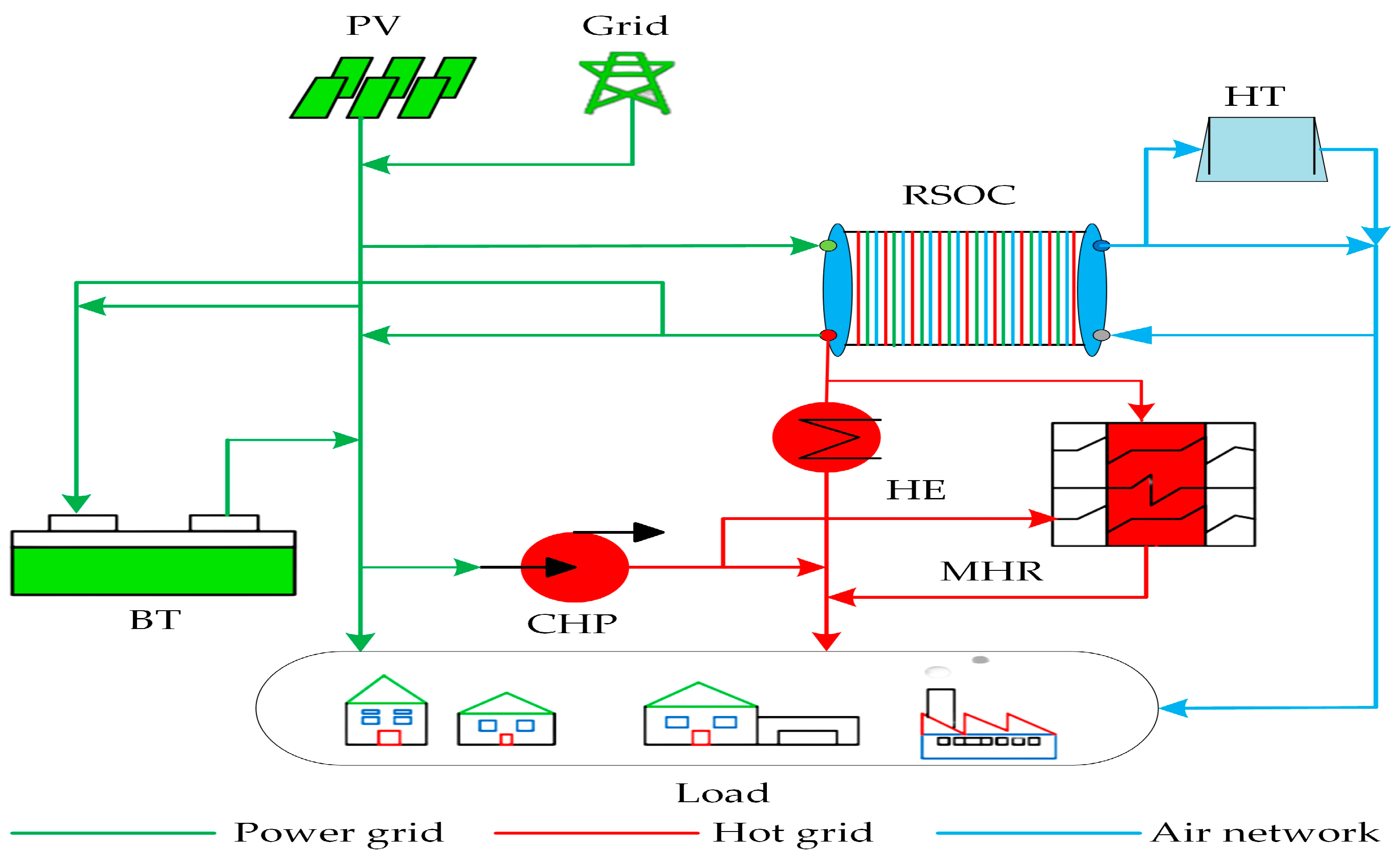

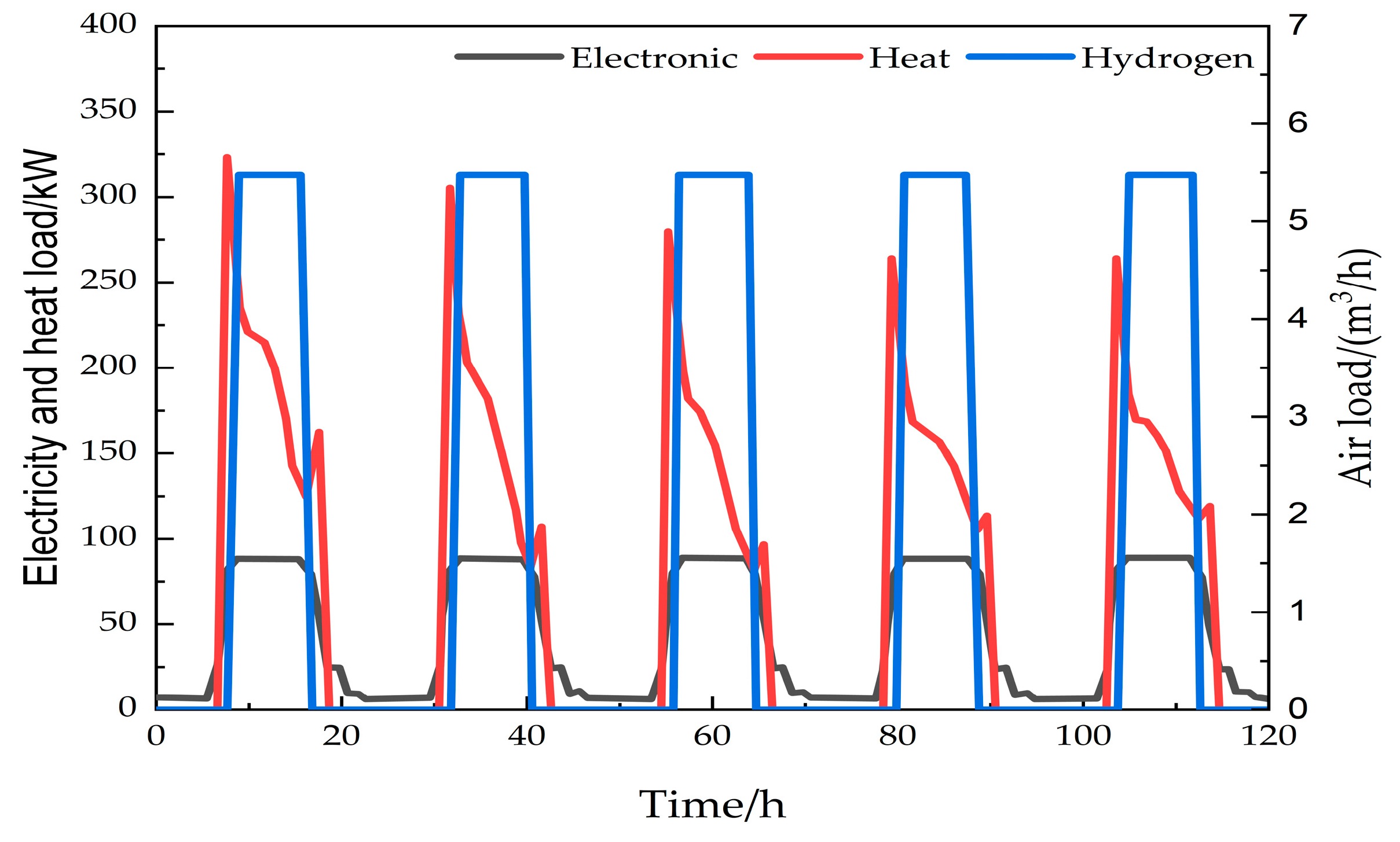
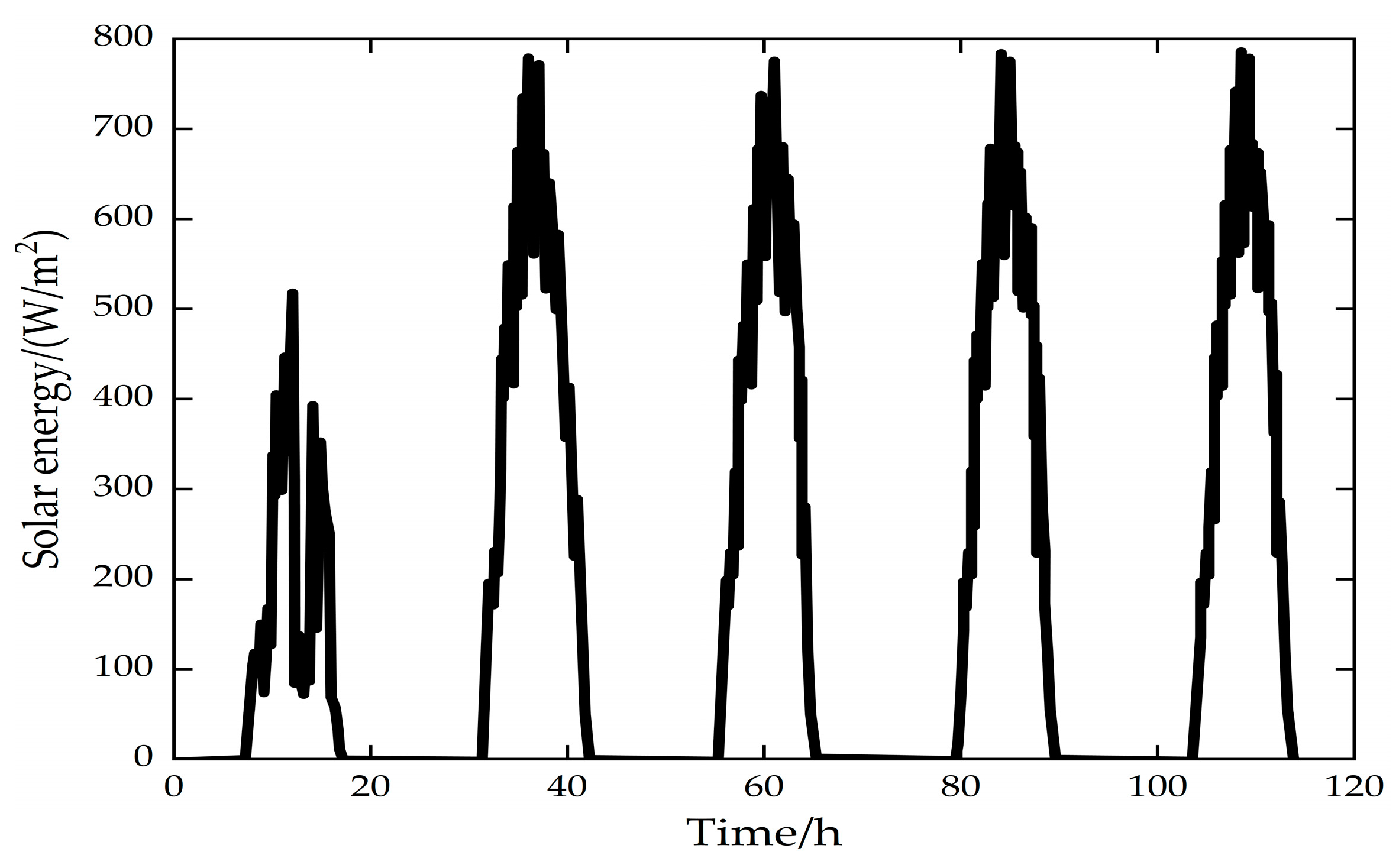
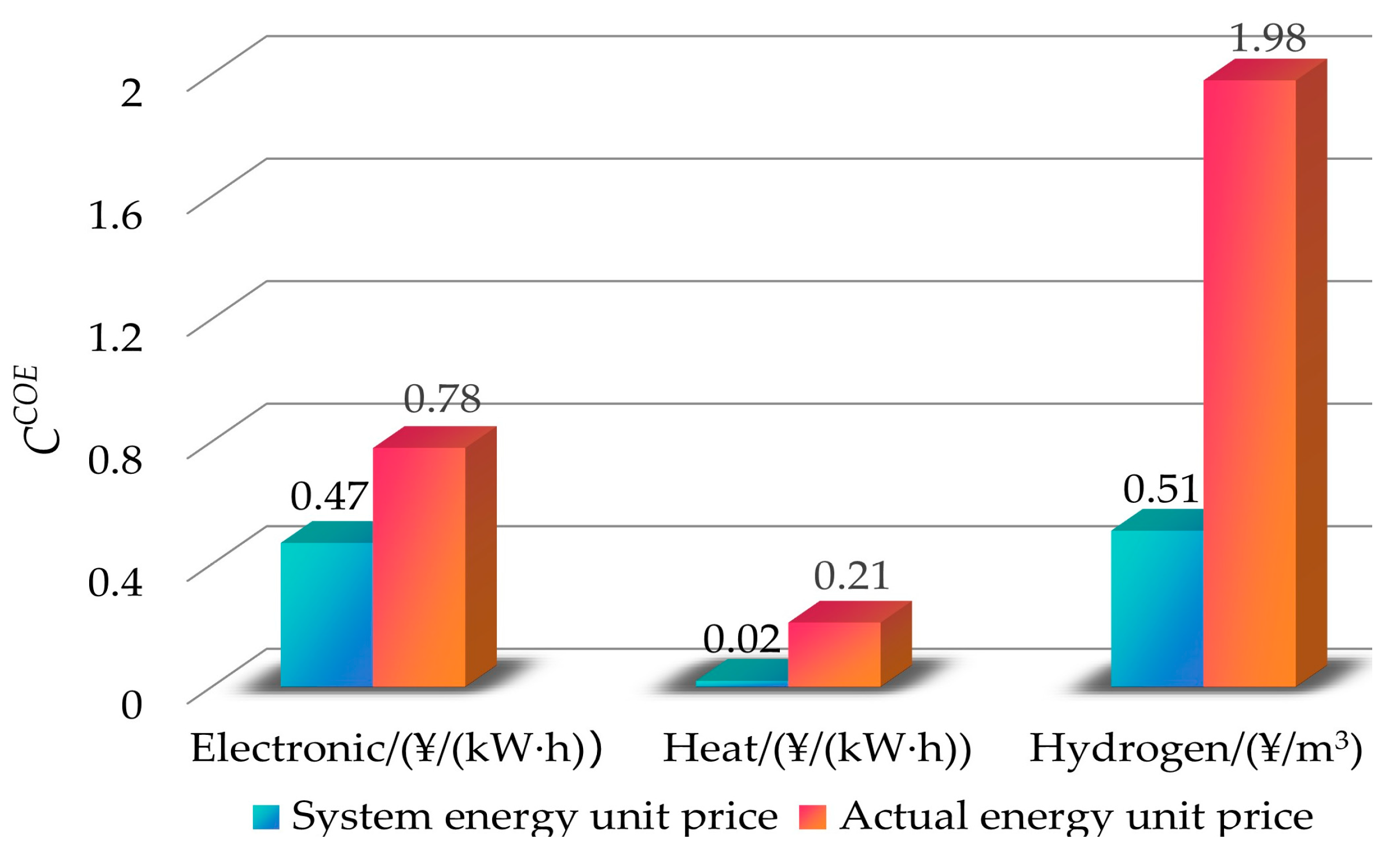
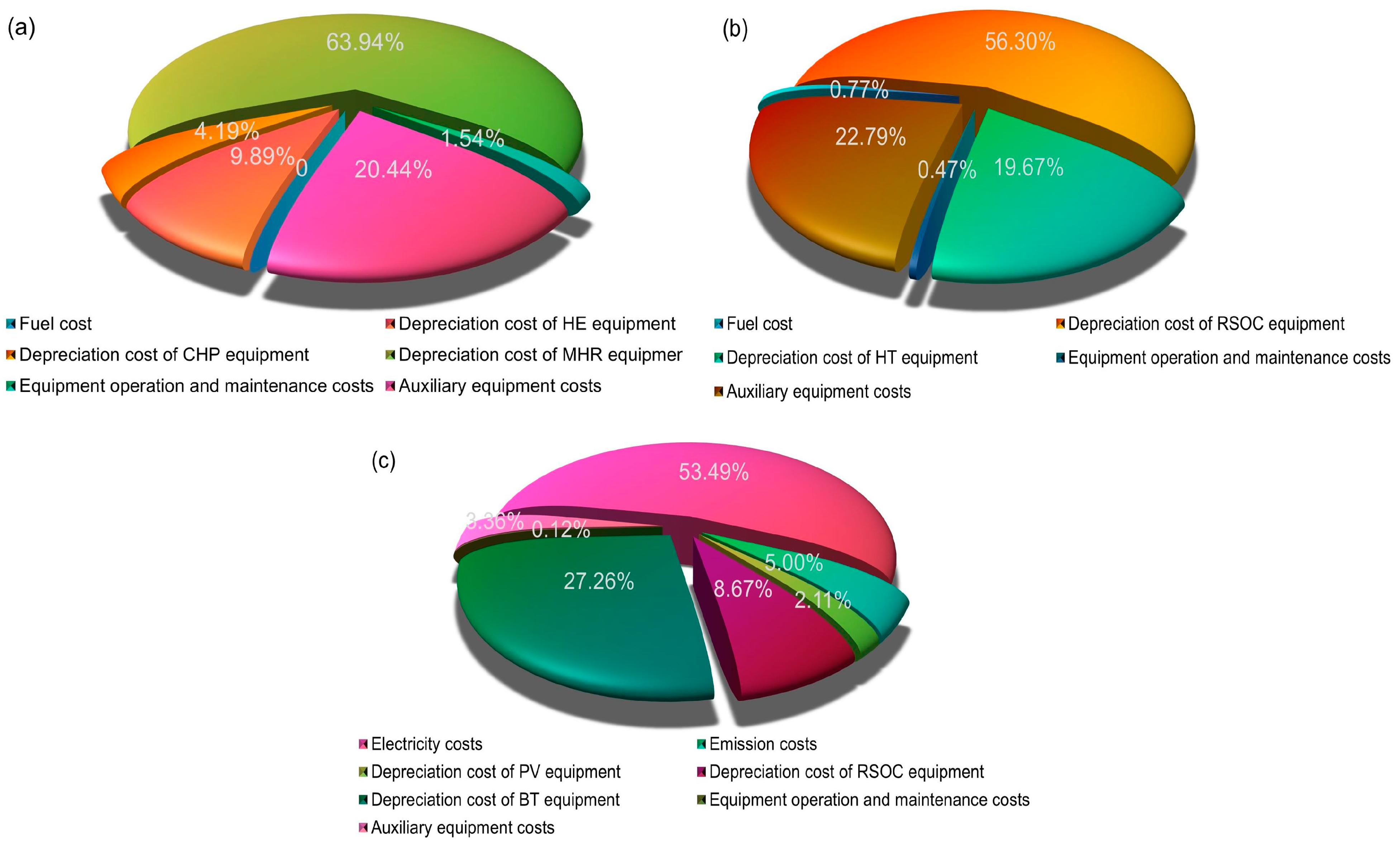
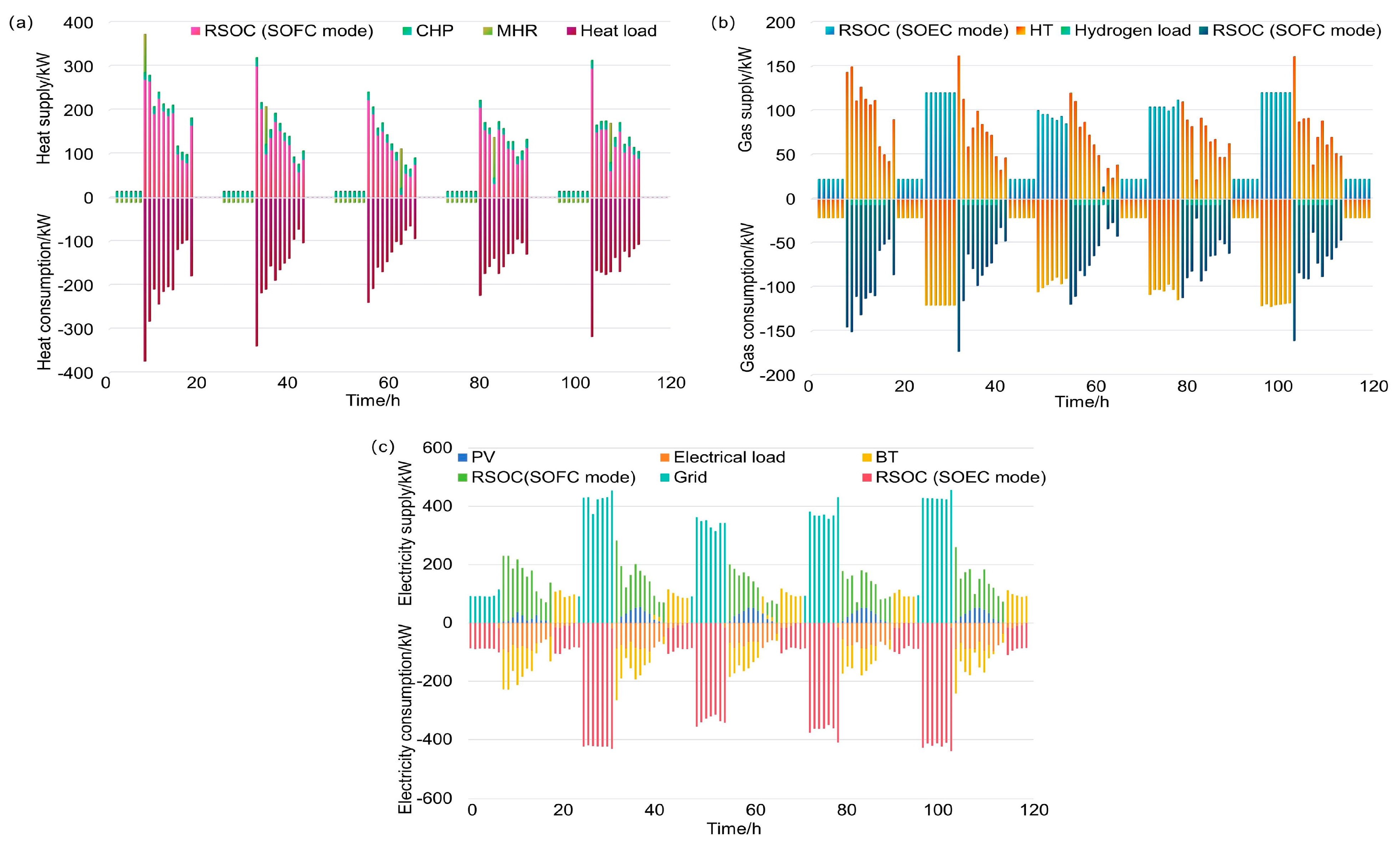
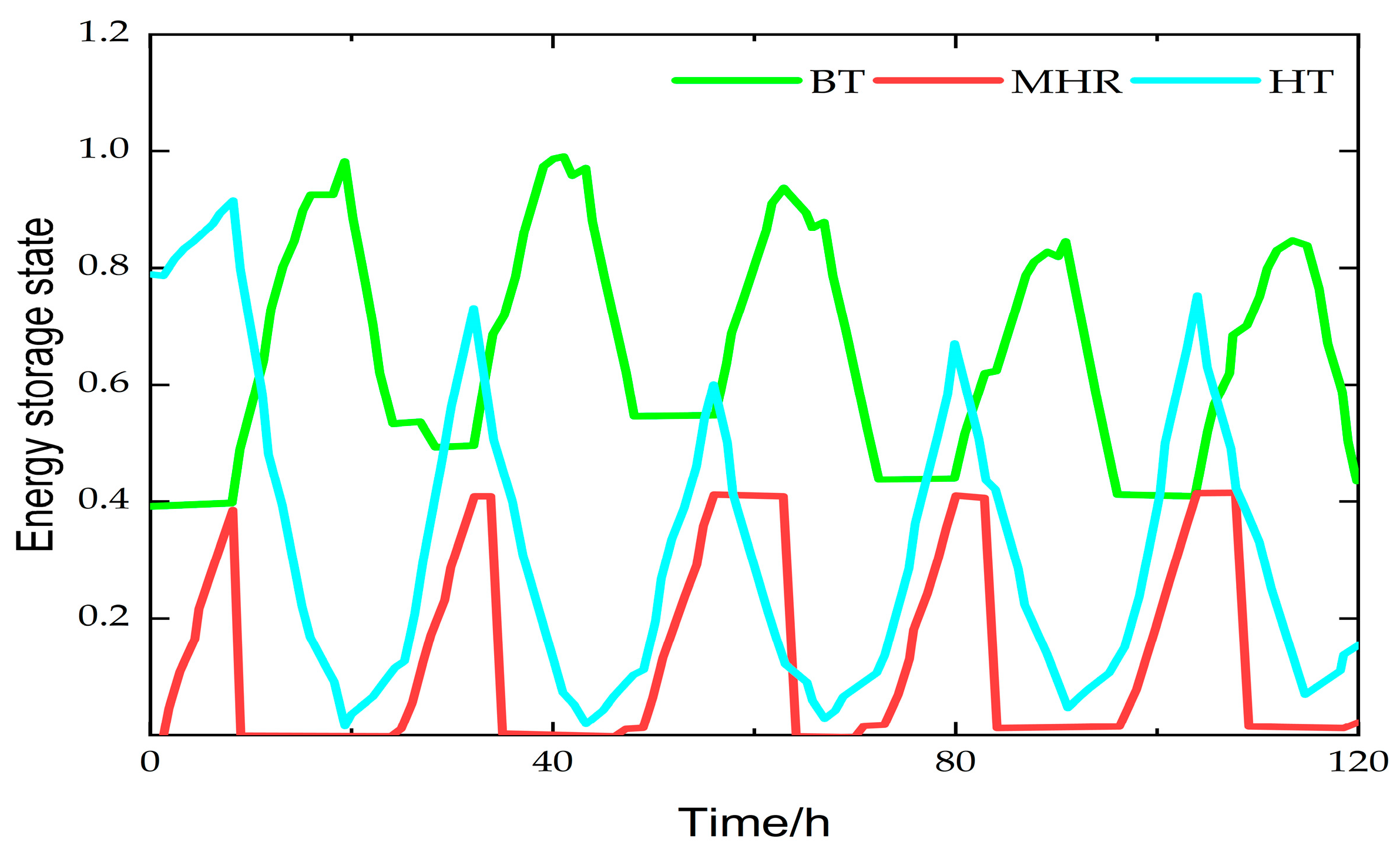
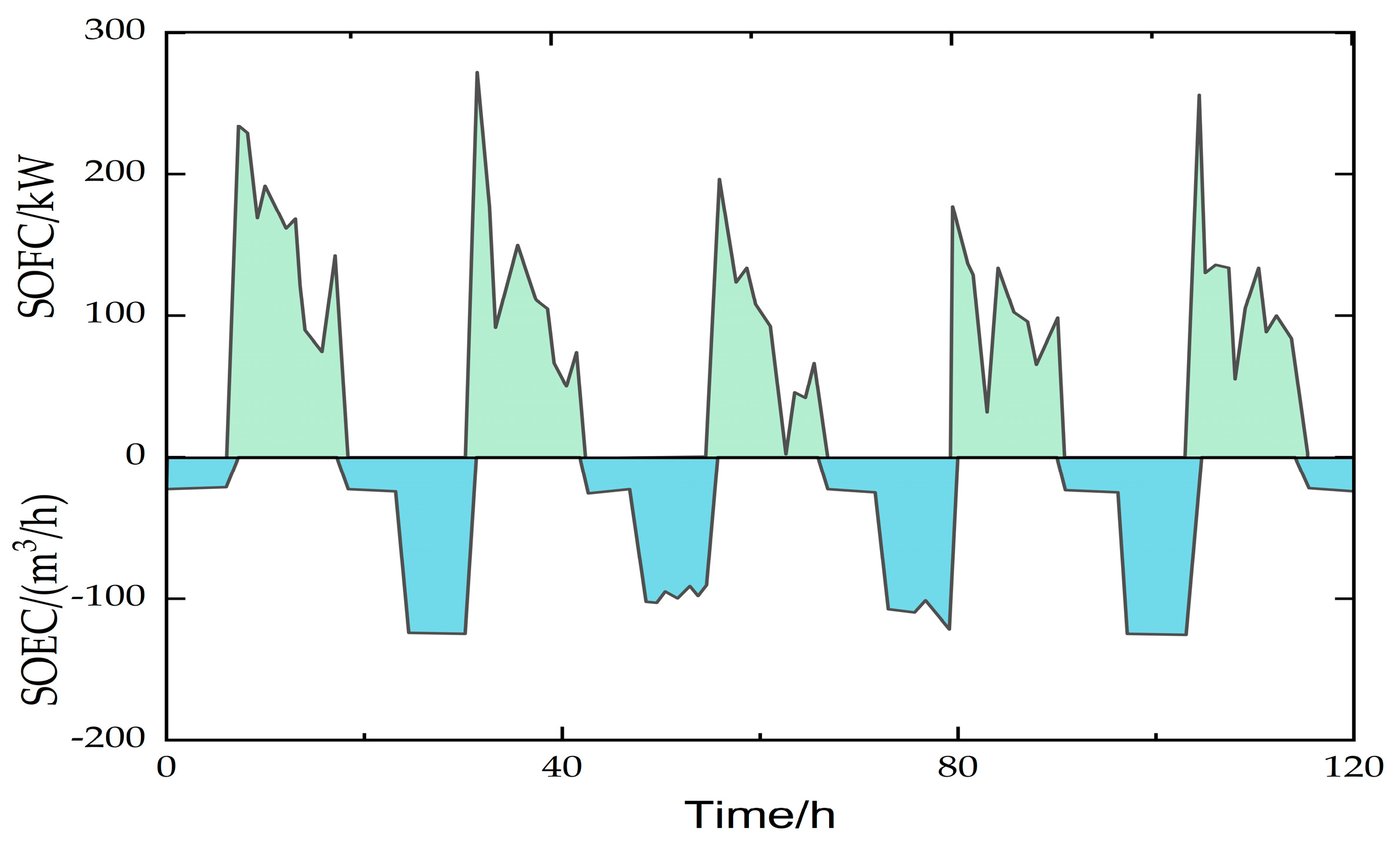
| Reference | System | Objective Function | Electricity | Heat | Hydrogen | RSOC | SOFC | SOEC |
|---|---|---|---|---|---|---|---|---|
| [9] | IES | Energy procurement costs and operating costs | √ | × | √ | × | × | × |
| [11] | IES | Carbon emissions and operating costs | √ | √ | × | × | × | × |
| [15] | SOFC | Operating cost | √ | √ | √ | × | √ | × |
| [16] | SOEC | Maintenance and operating costs | × | √ | √ | × | × | √ |
| [17] | Microgrid | Investment costs, operation and maintenance costs | √ | √ | √ | × | √ | √ |
| Article | IES | Equipment depreciation costs, fuel costs, pollutant costs and O&M costs | √ | √ | √ | √ | √ | √ |
| Equipment | Unit | Capacity |
|---|---|---|
| PV | m2 | 487.75 |
| RSOC | kW | 279.07 |
| SOEC | m3/h | 121.23 |
| HE | kW | 350.22 |
| CHP | kW | 17.38 |
| Grid | kW | 465.28 |
| BT | kW·h | 1314.02 |
| MHR | kW·h | 252.74 |
| HT | kg | 117.78 |
| Optimization Methods | Energy Unit Price Reduction Rate | ||
|---|---|---|---|
| Electricity | Heat | Hydrogen | |
| MOO | 36.2% | 85% | 73.9% |
| MILP | 39.6% | 87.3% | 72.1% |
| RCA + SQP | 39.9% | 90.5% | 74.2% |
Disclaimer/Publisher’s Note: The statements, opinions and data contained in all publications are solely those of the individual author(s) and contributor(s) and not of MDPI and/or the editor(s). MDPI and/or the editor(s) disclaim responsibility for any injury to people or property resulting from any ideas, methods, instructions or products referred to in the content. |
© 2024 by the authors. Licensee MDPI, Basel, Switzerland. This article is an open access article distributed under the terms and conditions of the Creative Commons Attribution (CC BY) license (https://creativecommons.org/licenses/by/4.0/).
Share and Cite
Zhang, L.; He, S.; Han, L.; Yuan, Z.; Xu, L. Multi-Energy Flow Integrated Energy System Considering Economic Efficiency Targets: Capacity Allocation and Scheduling Study. Processes 2024, 12, 628. https://doi.org/10.3390/pr12040628
Zhang L, He S, Han L, Yuan Z, Xu L. Multi-Energy Flow Integrated Energy System Considering Economic Efficiency Targets: Capacity Allocation and Scheduling Study. Processes. 2024; 12(4):628. https://doi.org/10.3390/pr12040628
Chicago/Turabian StyleZhang, Liwen, Shan He, Lu Han, Zhi Yuan, and Lijun Xu. 2024. "Multi-Energy Flow Integrated Energy System Considering Economic Efficiency Targets: Capacity Allocation and Scheduling Study" Processes 12, no. 4: 628. https://doi.org/10.3390/pr12040628
APA StyleZhang, L., He, S., Han, L., Yuan, Z., & Xu, L. (2024). Multi-Energy Flow Integrated Energy System Considering Economic Efficiency Targets: Capacity Allocation and Scheduling Study. Processes, 12(4), 628. https://doi.org/10.3390/pr12040628






